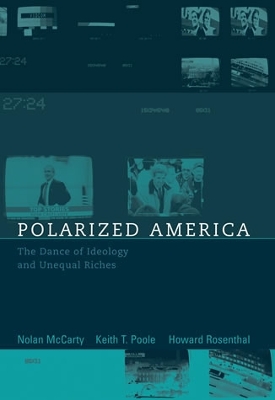Polarized America
1 total work
The idea of America as politically polarized--that there is an unbridgeable divide between right and left, red and blue states--has become a cliche. What commentators miss, however, is that increasing polarization in recent decades has been closely accompanied by fundamental social and economic changes--most notably, a parallel rise in income inequality. In Polarized America, Nolan McCarty, Keith Poole, and Howard Rosenthal examine the relationships of polarization, wealth disparity, immigration, and other forces, characterizing it as a dance of give and take and back and forth causality. Using NOMINATE (a quantitative procedure that, like interest group ratings, scores politicians on the basis of their roll call voting records) to measure polarization in Congress and public opinion, census data and Federal Election Commission finance records to measure polarization among the public, the authors find that polarization and income inequality fell in tandem from 1913 to 1957 and rose together dramatically from 1977 on; they trace a parallel rise in immigration beginning in the 1970s. They show that Republicans have moved right, away from redistributive policies that would reduce income inequality. Immigration, meanwhile, has facilitated the move to the right: non-citizens, a larger share of the population and disproportionately poor, cannot vote; thus there is less political pressure from the bottom for redistribution than there is from the top against it. In "the choreography of American politics" inequality feeds directly into political polarization, and polarization in turn creates policies that further increase inequality.
